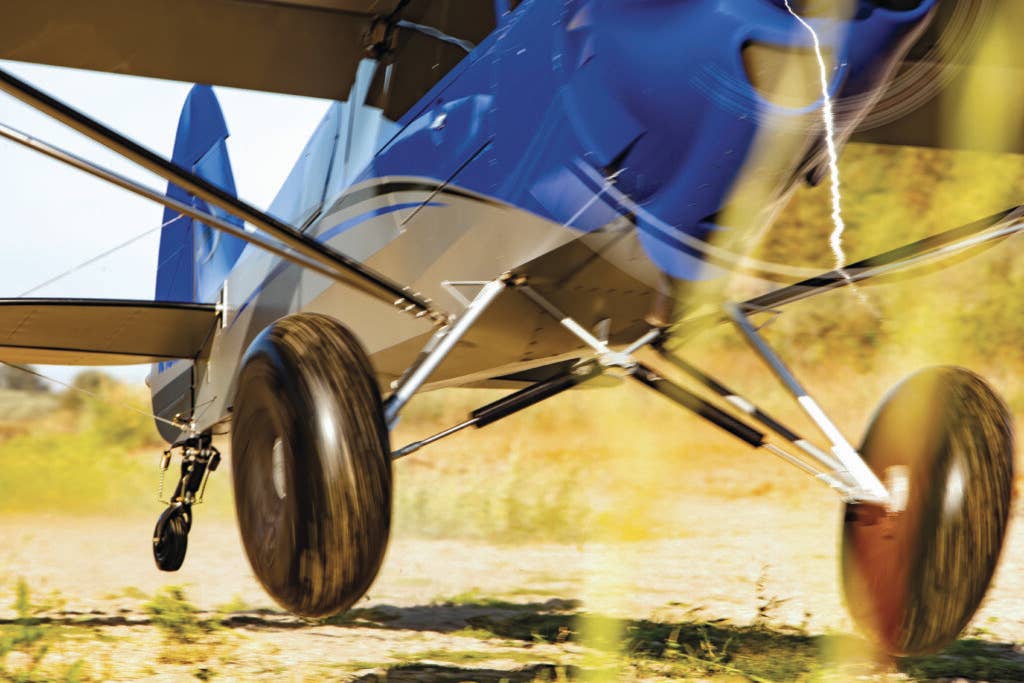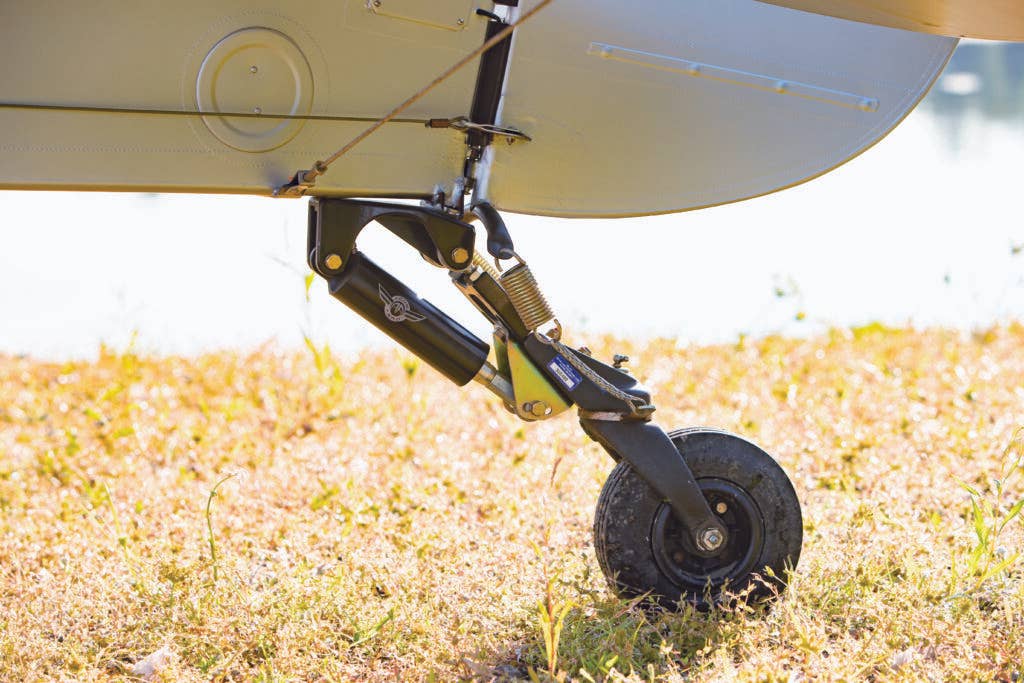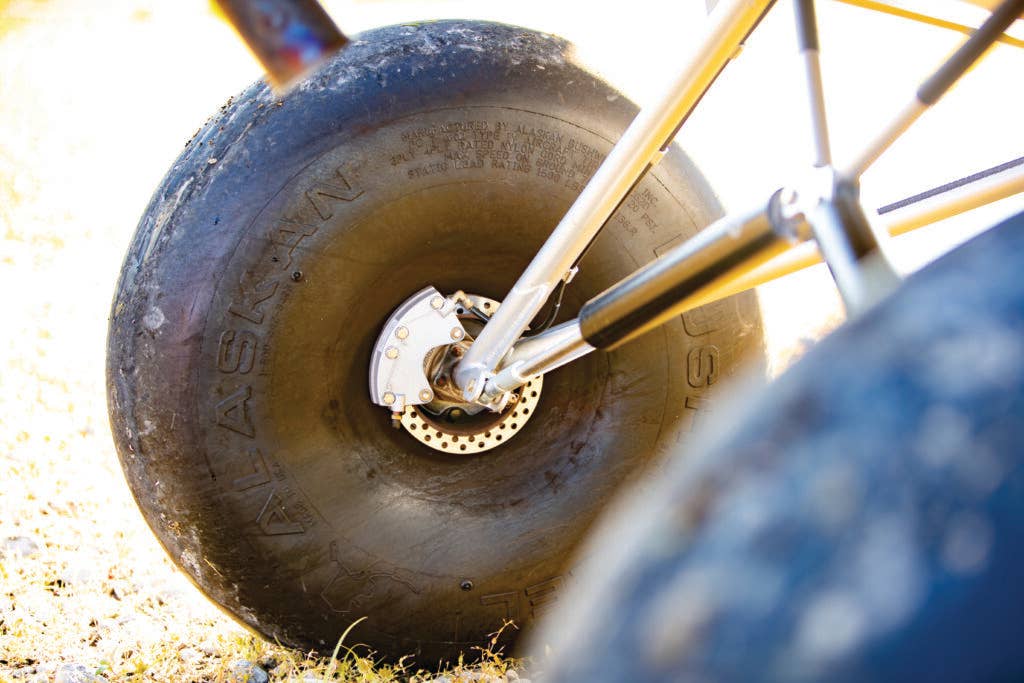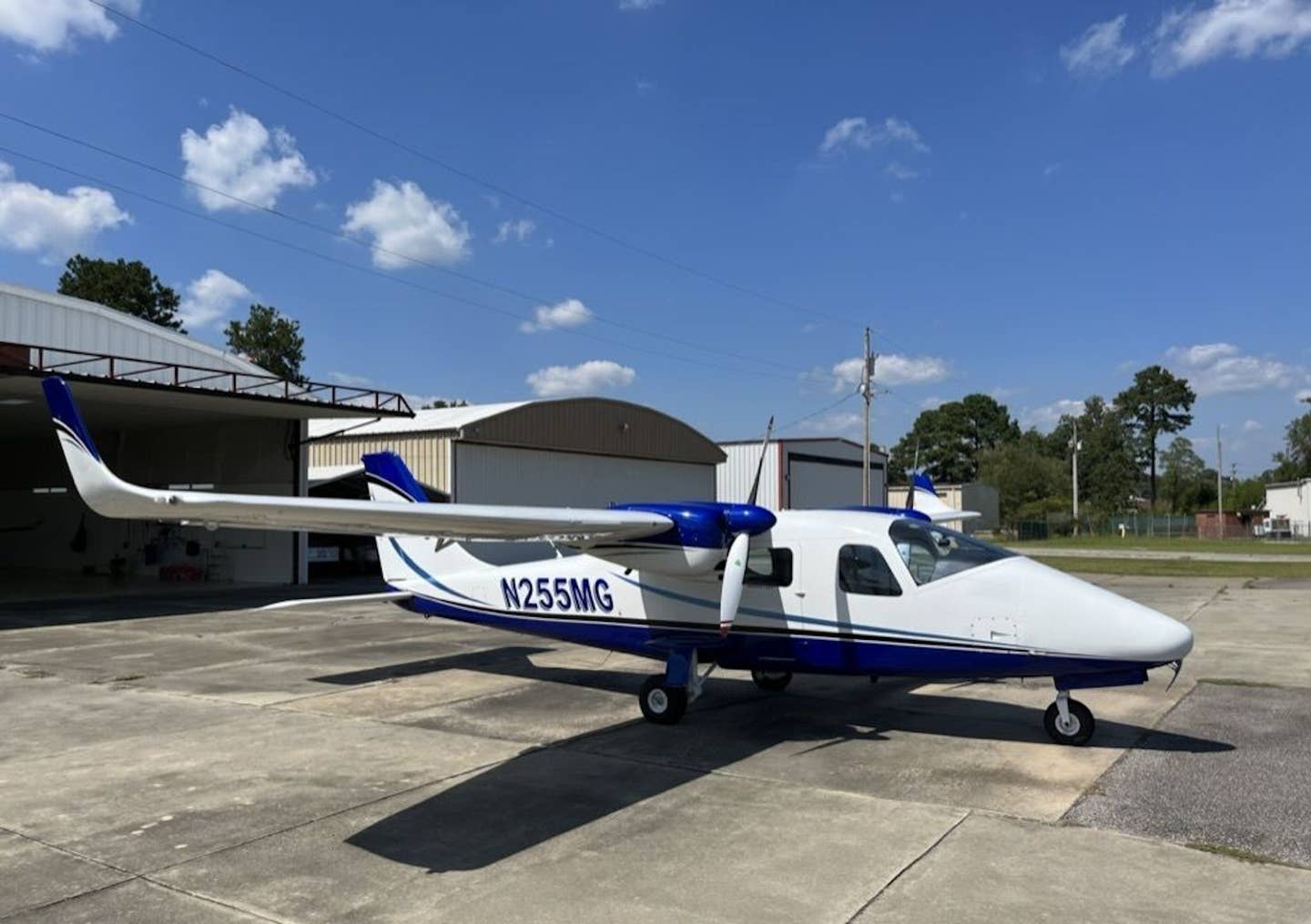We Fly: CubCrafters Carbon Cub EX-3 & FX-3 Made for Backcountry
The backcountry specialist forges new ground—and positions for growth.

[Credit: Jim Barrett]
Sometimes you put mud on the tires…sometimes you put straw in the wires. Both are in a day's work for the series of backcountry rides that sprang from the Piper Cub's legacy.
My earliest concerts with the progenitor Cub taught me well. In a Piper J-3 flown with instructor Rich Davidson out of Lee Bottom Flying Field (64I) near Jefferson, Indiana, 20 years ago, I learned the first of many Cub lessons. The sunny little taildragger loves to fly with the doors off, low and slow—it knows no other way. While the merry creature handles just fine on the pavement, it loves the grass, and the more out of the way the green piste, the better.
Meeting the CubCrafters’ Carbon Cub series for the first time, I feel no differently. In fact, this latest lesson hit home squarely our first time touching down on a gravel bar in the Yakima River near the company’s home base in southeastern Washington state.
I’d come to Yakima to fly two of the latest variants of the Carbon Cub, the factory-assist-built FX3 and its newest sibling, the EX3 kit-built version, for the experimental/amateur-built category. While the two feature the same fuselage and tailwheel design, what’s up front in the versions we’d fly is a little different but demonstrates well the design’s latest evolution into the customizable machine so well matched to the pilot.
A. The Executive Glass Touch panel option features the Garmin G3X Touch with synthetic vision for terrain following, and an angle of attack indicator (AOA) to help squeeze all of the performance from takeoff to landing and preserve safe margins along the way.
B. Comms are enhanced by the Garmin GTR 200 VHF com radio.
C. A remote-mounted Garmin GTX 335R transponder ensures you're compliant no matter what airspace you fly in.
D. You can add an autopilot, ADS-B, and an upgraded transponder in the panel, depending on the missions you plan in your FX-3 or EX-3.
The Power
Both aircraft feature a new 2,000-pound maximum gross weight—but from there, you have options. Either can be powered by the CubCrafters-exclusive Lycoming CC363i with 186 hp, up from the CC340’s 180 hp in earlier versions of the Carbon Cub. With fuel injection from Precision Airmotive and dual electronic ignition from Lightspeed Engineering, the CC363i extracts just a little bit more oomph from the block, as witnessed in our trials.
That engine also drives a new, lighter-weight, composite constant-speed propeller. CubCrafters promises higher efficiency, faster throttle response, and a 20-percent increase in thrust from the duo—and by pitting it against the previous engine, that made sense.
Where does it come from? Well, the improvements began with the CC340, and the impetus to lose weight as compared to standard Lycoming O-300 series en-gines. CubCrafters turned to partner ECi/Titan in 2008 and its own in-house manufacturing to fashion lighter-weight components, such as an aluminum sump and a magnesium accessory case.
Along with reducing weight in the electrical components, the changes dropped 45 pounds as compared to an O-320. The carbureted CC340 makes 180 hp, and the company thought it had found the ideal powerplant for the Carbon Cub. More than 400 deliveries later, that assertion has been validated.
But wait, the team thought—we can do more. The new engine just didn’t resonate well with the constant-speed prop—which was an important part of the wishlist customers had for better performance across all phases of flight.
Making It Sing
The skunkworks at CubCrafters set their sights on the Hartzell Trailblazer prop that’s popular in backcountry applications for its ability to coax the most from the engine for takeoff and climb. In the process of developing a powerplant to match, CubCrafters also moved to fuel injection—also by Precision Airmotive—for greater fuel efficiency and more reliable engine starts.
Adding a governor and other accoutrements to the prop/engine interface also adds pounds—so an increase in horsepower needed to offset incremental weight gains. The team found the power through incorporating Millennium cylinders with tapered barrels, a counterweighted crankshaft, and Superior Air Parts roller tappets. A proprietary cold-air induction system with a unique curved plenum resembling a streamlined udder is formed out of carbon fiber—we saw them in the molding process during our factory tour. Aero Sport Power—a longtime friend to CubCrafters—assembles the engine and tests it before it goes on the FX3 or out to a customer with the EX3 kit.
Proof in the Flying
For our first test flight, in a tangerine-and-black FX3 marrying the CC363i and Trailblazer prop, we caught the last of the cool morning at CubCrafters’ delivery and maintenance base on the south side of the field atYakima Air Terminal/McAllister Field (KYKM) in central Washington. CubCrafters' vice president of sales and marketing, Brad Damm, showed me around the preflight inspection and then hopped in the back to introduce me to the airplane properly.
I learned the ground coupling of the airplane with some S-turns, taxiing across the yellow line and trying the toe brakes along the way. The visibility to the front is pretty good, considering both my average height and the conventional-gear arrangement, so those turns served as an opportunity to wake up my feet as opposed to being truly necessary to see the way forward. In the cockpit, I oriented myself to the combo of the Garmin G3X Touch integrated flight deck plus G5 electronic instrument and GTR 200 VHF com radio—complete with an autopilot we wouldn’t use much. The throttle/prop levers sat at my left hand just above my waistline, with the mixture actuated by a knob on the left side of the instrument panel.
Still, I was ready to get the airplane into a flight attitude. With 7,600-feet-plus of pavement on Runway 27 ahead of us, even my first takeoff in the FX3 was hilariously short. A smooth application of throttle brought immediate reply as I held the stick forward to coax up the tail. Once that moment occurred, the rest of the ground roll took just a few seconds, and we were climbing through 600 feet agl by the end of the runway without much effort on my part.
In The Air
Slipping over the ridge to the south of the airport, we found a practice area to climb to 3,000 feet msl—more than 1,500 feet above the valley floor—for airwork. From a cruise climb power setting of 22.8 manifold pressure and 2,300 rpm, I tested out a few steep turns, dipping the Cub-familiar cross-brace bars to the horizon, to the left through 360 degrees, and then to the right.
The cable-actuated flight controls felt relatively smooth and the grip on the stick sat naturally in my right hand. Electric trim on the top of the stick also came readily to hand, though even in the left turn, I didn’t need much. I noted the improvement over legacy Cubs in aileron response—CubCrafters updated the airfoil and relocated the aileron hinge points to good effect. I pulled the throttle back for some slow flight to learn for myself the Carbon Cub’s benign low-speed handling characteristics, and flew through those shallower turns with a smile. Feeling warmed up, we flew into a stall series, starting with a power-off configuration and full flaps—the last notch I found a bit sticky to get to from the lever high in the left side of the cockpit. I’m sure I just need the right touch, developed with more time (yes, please). True to form, the FX3 wouldn’t really break in the approach-to-landing stall—it just mushed straight ahead with good aileron authority and airspeed below 45 mph (39 kias), as expected. The departure stall took a lot of nose-up attitude, but presented a fairly mild experience overall.
For my initial landings, we returned to the airport—the last pavement I'd see for the day. Slowing to 85 mph (74 kias) took little effort—this is not a particularly slick airframe despite its shiny coat—and I found a consistent rhythm coaxing the FX3 to an easy 65 mph (56 kias) on short final. Through a trio of three-point landings in light winds, I tested the FX3’s heavy-duty main landing gear and Alaskan Bushwheels’ tailspring and tailwheel. In some respects, the pavement can be harder on the big soft tires than the dirt. Still, the plush mains and honest control response dampened out any vagaries in my last-six-inches technique.



CubCrafters Carbon Cub EX3/FX3
Price (as tested): Varies
Powerplant: CubCrafters CC363i, 186 hp
Propeller: Hartzell Trailblazer, 2-blade, composite, constant-speed
Seats: 2
Empty Weight: 1,023 lb.
Max Gross Weight: 2,000 lb.
Useful Load: 977 lb.
Length: 23.3 ft.
Wingspan: 34.2 ft.
Wing Area: 179 sq. ft.
Fuel Capacity: 25 gallons
Max Rate of Climb: 2,400 fpm
Endurance: 5.8 hours at 110 mph/ 96 kias
Range: 765 sm
Max Speed: 141 mph/ 122 kias
Cruise Speed: 135 mph/117 kias @ 75 percent power
Stall Speed (ldg config): 37 mph/ 32 kias
Takeoff Ground Roll: Less than 100 ft.
Landing Ground Roll: 155 ft.

Subscribe to Our Newsletter
Get the latest FLYING stories delivered directly to your inbox






